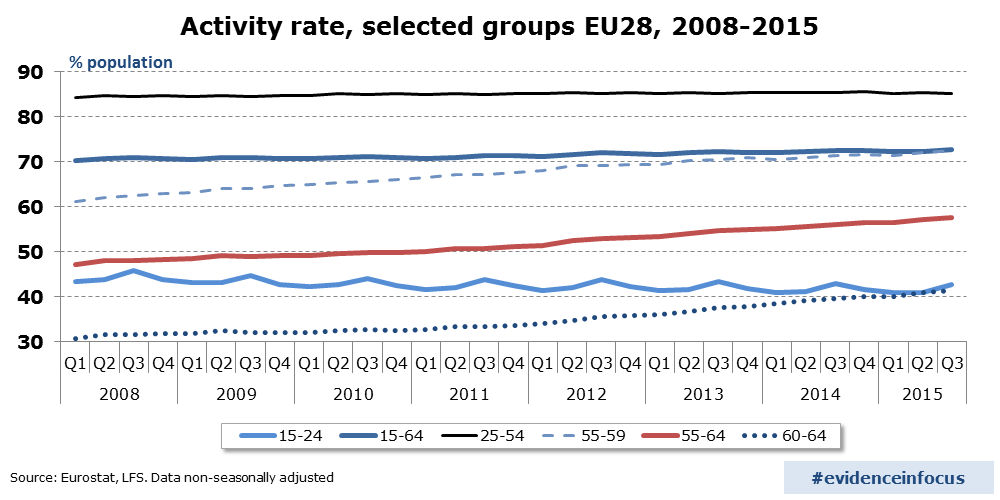The return of the older worker
(From ec.europa.eu)
© PointImages / Shutterstock
The activity (or participation) rate measures the share of working-age people who are in the labour force, including both those in employment and unemployment. There has been a constant growth in activity rates among developed countries during the last decades.
The EU used to trail the US and some other developed economies in terms of activity rates, and in 2006, there was a gap of around 5 percentage points between the US and the EU. However, this gap has disappeared by the third quarter of 2015, due to falling activity rates in the US and an increase by 3 percentage points in the EU.
The rise in the activity rate in the EU occurred in spite of the crisis which led to considerable job losses and a big increase in unemployment. It was the result of older workers staying in the labour force: the activity rate of older workers, those above 55 years old increased by almost 10 percentage points since 2008. The higher participation of older workers compensated the decrease of around 3 percentage points among young people (15-24 years) and the stagnation of the activity rate of the prime working-age population (25-54 years).
The increase in activity rates concerned both subgroups of older workers (55-59 and 60-64) in equal measure. Among people aged 60 to 64, the growth was modest until 2011, but accelerated thereafter, surpassing the growth of the 55-59 group in the most recent years. Those aged 55 to 59 have now the same participation rate as the overall working-age population (15-64).
This rapid rise in the activity rates of older workers is good news for welfare systems in our ageing societies if these older workers remain in employment rather than being unemployed. This is indeed the case for most of them: the EU employment rate for older workers increased by more than six percentage points, to 51.8%, since 2008.
This marks a decisive reversal of the previous trend towards earlier retirement and shorter working lives, and helps prevent a sharp rise in the effective old-age dependency ratio, i.e. the number of people who are actually in employment in relation to the number of people who do not work. Indeed, when looking at the entire population above 15 years (including those above retirement age), one finds that the share of the active population has remained constant over the latest years, notwithstanding the fact that the number of people older than 65 years has increased by more than 10 million since 2008 reaching 95 million, 5 million of whom are in employment.
For more details, see the Employment and Social Situation Quarterly Review - Spring edition.
Author: D. Arranz works as a statistician in the Thematic Analysis unit of DG EMPL.
The views expressed in this article are those of the authors and do not necessarily reflect the views of the European Commission.
Editor's note: this article is part of a regular series called "Evidence in focus", which will put the spotlight on key findings from past and on-going research at DG EMPL.
